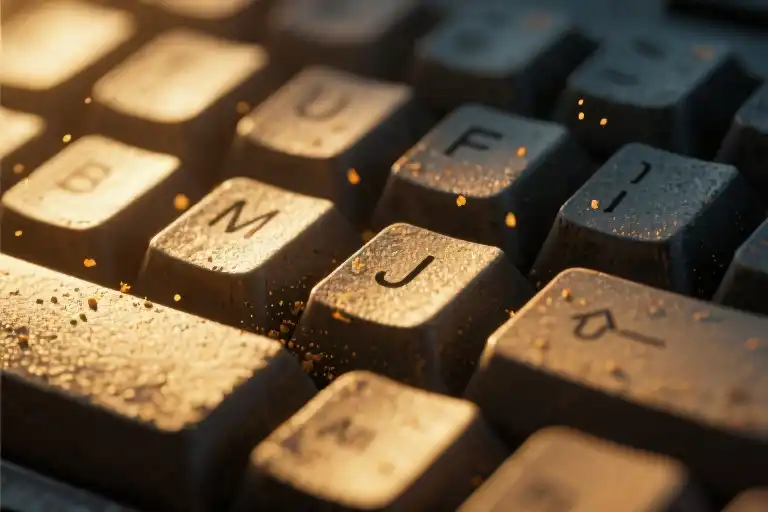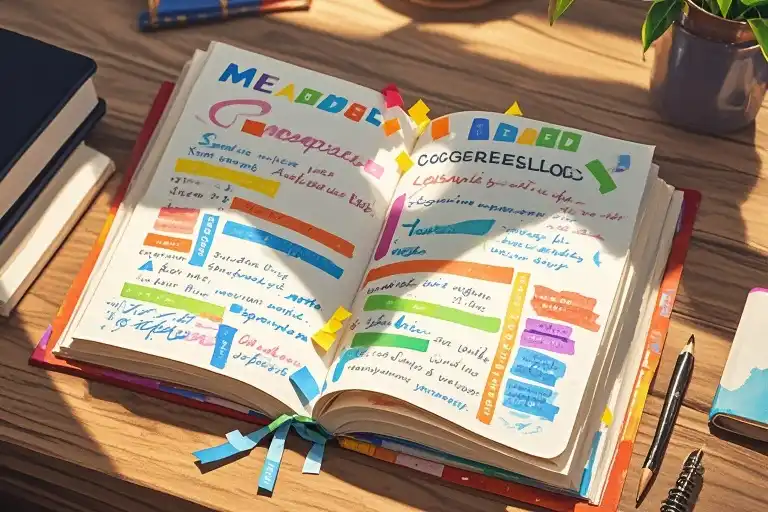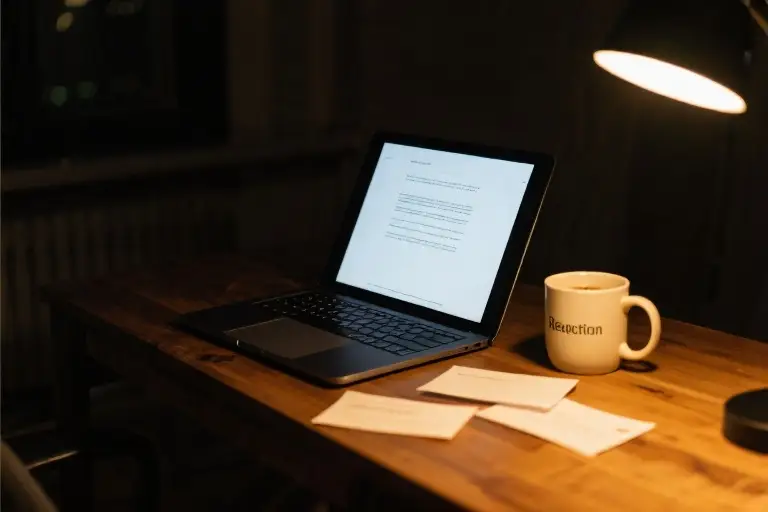The cursor blinks. That relentless pulse on a white screen mirrors the rhythm of your restless leg under the desk. Across the room, a half-packed suitcase yawns open—flight confirmation emails still glowing on your phone. We’ve all been there, convinced that extraordinary stories only exist beyond some geographical threshold, that true inspiration requires boarding passes and foreign currency.
Neuroscientists call it ‘inattentional blindness’—that peculiar way our brains filter out the familiar. A 2015 University College London study found pedestrians could walk past a dancing gorilla costume on their daily commute without noticing. Not because it wasn’t remarkable, but because their neural pathways had paved over the route with efficiency. Our writing minds do the same, dismissing the coffee stain on yesterday’s shirt as mundane while romanticizing distant café spills as ‘local color.’
This perceptual autopilot explains why your childhood home seems less detailed in memory than a hostel bedroom you occupied for three days. The brain treats routine as background noise, reserving its full observational power for novelty. But here’s the liberating truth: that mechanism works in reverse too. With deliberate focus, you can make your neural pathways treat the ordinary as extraordinary again.
The real journey begins not when your plane lands, but when you relearn how to see. That keyboard under your fingers right now—have you ever noticed how the F and J keys have raised ridges? That they’re the only ones textured for touch-typists to find home position? Your desk lamp casts shadows in angles you’ve stopped registering, while the hum of your refrigerator composes a symphony you’ve trained yourself to ignore.
Travel writers talk about ‘fresh eyes,’ but rarely admit those eyes come installed in our skulls at birth. The difference between a Parisian bakery and your neighborhood donut shop isn’t inherent magic—it’s your willingness to be enchanted. When anthropologists visit foreign cultures, they practice something called ‘thick description’—noting not just what people do, but the context, meanings, and textures surrounding actions. What if you applied that same scrutiny to your morning commute?
Consider this: the most revolutionary travel book ever written might be sitting in your apartment uncomposed. Not because you need to visit Antarctica, but because you haven’t yet examined your freezer’s frost patterns with an explorer’s curiosity. The writer’s true passport isn’t stamped at borders—it’s the willingness to stand still long enough for the world to reveal its strangeness wherever you are.
The Myth of Travel as Muse
The blank page glares back at you, its emptiness echoing the pressure to produce something extraordinary. Your fingers hover over the keyboard while your mind scrolls through exotic locations—perhaps a Moroccan spice market or Icelandic glaciers might spark that missing inspiration. This instinct reveals our collective writing myth: that compelling stories only exist beyond the horizon of our daily lives.
Consider three ubiquitous travel writing openings: the wide-eyed arrival narrative (‘As I stepped off the bamboo raft onto the mist-shrouded pier…’), the romanticized hardship tale (‘Twenty hours on a chicken bus with broken suspension…’), and the epiphany moment (‘Watching the sunrise over Angkor Wat, I suddenly understood…’). These tropes persist because they confirm our bias that distance creates value. Yet when Kyoto tourists describe golden pavilions with nearly identical phrases, while the temple’s elderly caretaker notices how morning dew makes the wooden walkways dangerously slick for his arthritic knees, we glimpse perspective’s true power over geography.
Neuroscience explains this through predictive coding—our brain constantly filters familiar stimuli to conserve energy. The Japanese gardener who trims the same hedges daily develops neural blind spots where visitors see striking topiaries. This biological efficiency becomes our creative curse, making the ordinary seem unworthy of attention until viewed through someone else’s sensory apparatus. A Texas diner’s sticky vinyl booths appear mundane to locals but transform into anthropological artifacts for a Singaporean writer documenting American vernacular design.
Travel does disrupt our mental routines, but not because distant locations inherently contain better stories. The disorientation of navigating Hanoi’s alleyways forces us into heightened awareness—precisely the state we could cultivate while walking our own hometown streets if we approached them with intentional curiosity. The real magic happens when we short-circuit our brain’s autopilot, whether by changing continents or simply deciding to notice the hidden wear patterns on our office stair railings.
What if the most radical writing act isn’t boarding a plane but reprogramming how we process the view from our kitchen window? The tourist photographs a Parisian bakery; the resident baker feels the ache in her flour-dusted elbows. Both perspectives hold truth, but only one requires a passport.
The Perception Reset Experiment
Your phone sits in your pocket like a fossil from another age—those ancient models with physical buttons that clicked under your thumb. Most of us never use half its functions, yet carry this miniature universe everywhere. Try describing the texture of the side buttons you’ve never pressed, the ridges on the volume control your fingers avoid. There’s an entire tactile landscape you’ve been ignoring while staring at the glowing rectangle.
Neuroscientists call this ‘sensory gating’—our brains filter out predictable inputs to save energy. The phenomenon explains why you can’t recall the exact pattern of your bedroom wallpaper, though you see it daily. This selective blindness extends to language itself. We say ‘phone’ without seeing the absurdity of compressing a supercomputer, camera, and global library into a single syllable.
Blind poet John Hull described rainbows as ‘the sky’s braille.’ His memoirs reveal how losing sight amplified other senses—he could detect building materials by their echo patterns. Sighted writers often default to visual clichés (‘fiery sunset’), while Hull wrote of thunderstorms as ‘the clouds unzipping.’ His work demonstrates how perceptual limitations can paradoxically expand descriptive possibilities.
Three Unlearning Exercises
- Button Archaeology
Turn your phone upside down and navigate it blindfolded. Notice how the home button feels different when you’re not anticipating its click. Write six sentences describing this experience without using visual metaphors. - Keyboard Topography
Type a paragraph with your eyes closed. The backspace key you usually strike with precision now becomes a treacherous cliff edge. Document the muscle memory errors as if mapping undiscovered continents. - Rainbow Translation
Describe a rainbow to someone who’s never seen color. Does ‘violet’ become ‘the sound of the lowest piano key’? Can ‘indigo’ transform into ‘the smell of ink drying’? This forces dismantling automatic linguistic shortcuts.
These experiments reveal how our writing suffers from neural efficiency. The brain prefers well-worn pathways—describing a face as ‘heart-shaped,’ a voice as ‘melodic.’ Breaking these patterns requires deliberate sensory sabotage. Tomorrow, try brushing your teeth with your non-dominant hand while mentally narrating each motion like an alien anthropologist. The resulting cognitive friction often sparks unexpected metaphors.
Cognitive scientists confirm this discomfort breeds creativity. University of Toronto studies show that deliberate awkwardness—like wearing clothes inside out or taking unfamiliar routes—increases divergent thinking by 37%. The key lies in short-circuiting automatic processing, making the mundane seem newly strange. Your writing doesn’t need passport stamps when it can find wonder in the topography of your coffee mug’s handle.
Consider the last time you truly noticed your refrigerator’s hum. That constant background drone could be the opening line of a dystopian story (‘The machines whispered to each other through the night’). Or the way your shoelaces curl when untied might mirror the handwriting of a forgotten lover. The material exists everywhere—you’ve just been trained to overlook it.
This perceptual reset isn’t about better observation, but worse. It requires unlearning efficiency, embracing the clumsiness of fresh attention. Start by cataloging three textures you touch daily without consciousness: the ribbed edge of your laptop charger, the cold smoothness of a doorknob in winter, the way your pillowcase feels different at 3 AM than at bedtime. Describe them as if to a Martian materials scientist. The sentences will surprise you.
The Alchemy of Language
The office printer hums to life as you approach, its mechanical whirring suddenly anthropomorphized in your mind. This temperamental beast that devours paper and spits out memos might just hold the key to unlocking your most creative prose yet. Let’s perform some linguistic alchemy together, transforming the mundane into the magical through the writer’s most potent tool: perspective.
Animating the Inanimate
Start by giving that printer a personality. Is it a grumpy old professor, muttering under its breath when asked to perform simple tasks? Or perhaps a dramatic diva, flashing error lights like a prima donna throwing tantrums? Describe its paper tray as a bottomless stomach, its blinking lights as winks of conspiracy. Notice how this simple shift in perspective breathes life into an object you’ve walked past a thousand times without seeing.
This exercise works because it forces what the Russian formalists called ostranenie – making the familiar strange. Viktor Shklovsky argued that habitual perception makes our experience of the world ‘automatic’ – we stop seeing what’s before our eyes. By describing your printer as if encountering it for the first time, you’re practicing the literary equivalent of an anthropologist studying an alien culture. The results often surprise even seasoned writers.
Modernizing Defamiliarization
Shklovsky’s ‘stoniness of the stone’ theory takes on new dimensions in our digital age. Where he urged writers to describe a stone as if seeing its mineral texture for the first time, we might apply this to our smartphones. Try describing your lock screen pattern as an ancient ritual gesture, or your email inbox as a bustling marketplace of ideas. The microwave’s beep becomes a sonar pulse from the depths of your kitchen ocean.
One workshop participant recently transformed their microwave manual into a prose poem:
‘The rotating plate spins like a vinyl record of heat, playing the symphony of leftovers. Numbers glow like a countdown to flavor, while the hum builds to crescendo – DING! The aria of reheated coffee.’
Notice how this perspective shift creates what John Gardner called ‘the vivid continuous dream’ of good writing. The technical becomes tactile, the functional flows into the fantastic.
Practical Alchemy
Here’s how to practice this transformation daily:
- Choose one mundane object in your immediate environment
- Describe it using two contradictory senses (how it might taste or sound)
- Give it a secret inner life or hidden agenda
- Rewrite its standard function as a mythical quest
The coffee maker isn’t brewing – it’s performing alchemical transformations of bitter beans into liquid energy. Your desk chair isn’t just furniture – it’s a throne from which you rule kingdoms of imagination. This mental flexibility becomes your creative superpower, turning grocery lists into character sketches and commute routes into epic journeys.
When you master this alchemy, you’ll never face ‘writer’s block’ again – only undiscovered perspectives waiting to be revealed. The world around you becomes an endless source of material, each object a Russian nesting doll of potential stories. All it takes is the willingness to see your surroundings as if you’ve just landed from Mars, with fresh eyes and a curious mind.
The Alchemy of Discomfort
There’s something unsettling about brushing your teeth with the wrong hand. The toothpaste cap refuses to twist open, the bristles stumble against your gums, and suddenly this automatic morning ritual demands your full attention. That’s precisely where the magic happens for writers. When the University of Toronto conducted their landmark study on behavioral disorientation, they discovered a fascinating correlation: participants forced to use their non-dominant hand for routine tasks showed 37% greater creative problem-solving abilities in subsequent tests.
This isn’t about ambidexterity—it’s about disrupting the neural autopilot that makes us sleepwalk through our surroundings. The moment your left hand (or right, for the southpaws) fumbles with your shoelaces, you’re essentially rebooting your perceptual operating system. Your brain shifts from energy-efficient default mode into heightened awareness, that same alert state travelers experience when navigating foreign subway systems or deciphering unfamiliar menus.
The Mischief Manifesto
Let’s construct your personal cognitive disruption toolkit:
- Morning Pages Gone Wrong: For the next three days, journal your morning observations using your non-dominant hand. Don’t strive for legibility—embrace the childlike scrawl. Notice how the physical struggle bypasses your internal editor, often releasing surprisingly raw imagery.
- Route Rebellion: Tomorrow, take a different path to your usual coffee spot. Not just an alternate street—alter your mode. If you normally walk, ride a bike while naming every blue object you see. If you drive, take the bus and document three conversations you overhear.
- Cutlery Anarchy: At your next meal, eat with utensils swapped between courses. Salad with a soup spoon, steak with a teaspoon. When physical awkwardness makes you hyper-aware of each mouthful, descriptions of taste and texture gain new dimensions.
These exercises aren’t gimmicks—they’re controlled tremors shaking loose the sediment of habitual perception. The psychologist Mihaly Csikszentmihalyi noted that creative breakthroughs often follow periods of ‘constructive discomfort.’ By deliberately engineering small dysfunctions in your daily patterns, you recreate the neurological benefits of travel without boarding a plane.
The Discomfort Dashboard
Track your progress with these warning signs that you’re doing it right:
- You pause mid-sentence because your usual cliché no longer fits
- Household objects begin suggesting their own metaphors (why does the refrigerator hum in B-flat?)
- You catch yourself staring at pedestrian things like doorknobs or sidewalk cracks with unsettling intensity
This isn’t about manufacturing artificial strangeness—it’s about removing the filters that make the ordinary invisible. When poet Mary Oliver described her work as “the art of paying attention,” she might as well have been talking about eating yogurt with chopsticks or writing grocery lists upside down. The creative mind thrives on productive confusion.
Your mission this week: commit one deliberate act of behavioral sabotage each day. Document the sensory fallout. That momentary disorientation when your keys aren’t in their usual pocket? That’s the birthplace of fresh perspective. As your neural pathways protest then adapt, you’ll find your writer’s gaze becoming both more alien and more intimate—seeing the world as if for the first time, while recognizing depths you’d previously overlooked.
The Journey Ends Where It Began
The writer’s fingers hover over the keyboard, that familiar paralysis setting in. Outside his window, the same maple tree sways in the breeze as it has for fifteen autumns. The cursor blinks with metronomic regularity, matching the rhythm of his restless leg bouncing under the desk. Somewhere in his mind plays a montage of travel bloggers scaling Machu Picchu and journalists embedding with nomadic tribes – the kind of dramatic backdrops he believes all proper writing requires.
Then his gaze falls on the coffee cup. Not just falls, but truly sees it for the first time in years. The chip on the rim where his tooth struck it during that midnight writing sprint. The faint stain pattern that perfectly mirrors the coastline of an imaginary country. The way the morning light refracts through leftover droplets, projecting tiny rainbows onto his draft notes. Suddenly, the blank document doesn’t seem so terrifying.
This is where we begin our final lesson: the art of stationary travel. Not some metaphorical cop-out, but an actual methodology backed by cognitive science. When neuroscientists map brain activity during creative breakthroughs, they find the same patterns in monks meditating on mountaintops and office workers staring at post-it notes. The magic was never in the mileage, but in the mental pivot.
So we’re launching the 21-Day Motionless Marathon today. No suitcases, no itineraries, just you and the three-block radius you’ve walked through unseeing for years. Here’s your starter kit:
- Microscope Mornings: Spend seven minutes observing a single square foot of your kitchen before breakfast. Note how the crumb patterns rearrange themselves like continental drift.
- Eavesdrop Anthropology: At the laundromat or bus stop, document conversations not for content but for musicality – the staccato of complaints, the legato of gossip.
- Familiar Face Studies: Sketch your barista’s hands in words until you could recognize them blindfolded by their paper-cut scars and espresso-stained cuticles.
John Lennon was only half right when he sang ‘reality exists in the mind of the observer.’ The fuller truth? Reality multiplies in the mind of the describers. That coffee cup on your desk holds more undiscovered countries than any passport could stamp. The visa you need isn’t from some foreign embassy, but from your own stubborn perception.
Your assignment isn’t to write about places, but to place yourself inside the writing – to become the lens that warps the ordinary into the extraordinary. When you finish these three weeks, that maple tree outside your window won’t just be a tree anymore. It’ll be a hundred-armed deity conducting the wind’s symphony, a vertical river pumping chlorophyll between earth and sky, a generations-old scribe recording neighborhood secrets in its bark’s cursive grooves.
The greatest travel stories aren’t found in departure lounges, but in the courage to truly arrive where you’ve always been. Now go unpack your eyes.





